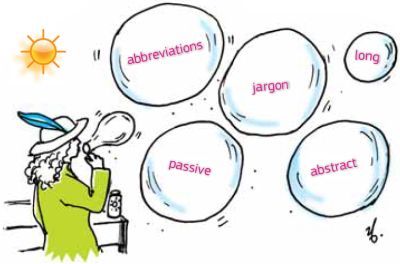What are you trying to achieve?
What is the purpose of your document? After reading it, what will your readers have to do?
-
make a decision?
-
handle a certain situation?
-
solve a particular problem?
-
change their attitude towards something?
What points must the document cover?-
Decide on your message
-
Make a list or bubble diagram (see illustration) containing all the points you expect to make, in no particular order.
-
Cross out the irrelevant points.
-
Link the remaining points into related groups.
-
Fill any gaps in your knowledge: make a note of facts you will need to check and/or experts you will need to consult.
This approach applies to practically all non-literary texts: memos, reports, letters, user guides, etc. For formal documents such as legislation, specific drafting rules must be followed.
An alternative is the ‘7 questions’ approach.
This is a structured method of covering relevant information:
WHAT? My essential message
WHO? Persons concerned
WHEN? Days, hours, timelines, deadlines
WHERE? Places
HOW? Circumstances, explanations
WHY? Causes and/or objective
HOW MUCH? Calculable and measurable data
